What is Ad Tech? A Basic Introduction to Advertising Technology
January 23, 2023
Editorial Policy
All of our content is generated by subject matter experts with years of ad tech experience and structured by writers and educators for ease of use and digestibility. Learn more about our rigorous interview, content production and review process here.

Key Points
- Any way you cut it, the ad tech ecosystem is messy. Before you dive in, you have to develop a fundamental understanding of the basic concepts, tools, and players involved.
- The ad tech ecosystem for publishers relies heavily on a wide variety of tools and resources that need to be customized to your unique needs.
- Playwire can take the complexity out of your ad tech stack by streamlining all the components required to maximize your revenue into a single revenue amplification platform.
It’s complex. It’s challenging. It’s ad tech.
As a publisher looking to maximize your ad revenue, learning to navigate the confusing mess of ad tech solutions can be overwhelming. If it’s not tripping you up at all, especially at first, you’re probably doing it wrong.
That said, it’s nearly impossible to achieve your ad revenue goals without understanding ad tech. It’s a steep learning curve so scale it as you must.
Only at that summit of understanding and skill will you be equipped to deploy a full-fledged ad tech stack…. One that increases the value of your ad inventory without compromising the experience of humans along the way.
So, where do we start?
In the beginning, with what you need to know to succeed as a publisher.
In this article, we’ll give you all the lingo and ideas that form the giant interdependent universe that is ad tech.
-- Article Continues Below --
The Complete Publisher Ad Tech Stack: Everything You Need to Know
What is Ad Tech?
Ad tech, or advertising technology, describes the tools, software, platforms, networks, and resources used in the digital advertising industry.
There’s a lot of jargon to wade through, and even more acronyms.
Here are the people and things —
The primary players in ad tech:
- Publishers (that’s you)
- Advertisers (your buyers)
- Audiences (your site visitors or app users)
- Ad tech service providers (like us)
- Ad agencies and ad agency trade desks (our Direct Sales team works with them)
- Tools that manage demand flow between advertisers and publishers: Ad networks, Ad Exchanges, SSPs, and DSPs (our tech covers a huge swath of these)
The primary publisher ad tech stack components:
- Header bidding
- Ad server
- Brand safety and ad verification
- Consent management
- Identity resolution
- Video player
- Data management platform
- Revenue Intelligence (if you’ve got access to our tech, that is)
Don’t start spinning. This is all Googleable and we have very robust resources — after you’re finishing reading here, visit our learning center.
Who Uses Ad Tech?
Lots of parts but once you understand them, you have a box-perfect puzzle. Right?
Wrong.
We were serious about the ecosystem metaphor. It’s apt.
There are dimensions and climates and cultures and vast swaths of wilderness to traverse if you’re going to wayfind the ad tech world.
Here is the cast:
Creation: Publishers
Publishers like you are the central hub of the digital advertising industry.
You own the digital space, you publish the content that attracts valuable audiences, and you sell both your online advertising space and the attention of your audience to relevant advertisers.
In the ad tech ecosystem, publishers manage the largest volume and variety of tools and platforms. And (fun times!), those things grow in tandem with the evolution of your site or app.
Here are the things you should care about the most:
- Ad yield and layout
- Innovations for how ads interact with audiences
- Ad relevance and visitor experience
- The balance between resource (team and tech) costs and revenue
And the stuff you need, tech stack style, to pull off those priorities:
- Ad servers
- SSPs
- Ad exchanges
- Ad networks
- DMPs
- CDPs
- Ad quality resources
.png?width=544&height=507&name=Web-Ad-Tech-Stack%20(1).png)
Depending on the size of the publisher, that second list could be exponentially longer. The potential for ad revenue increases as you grow only if you can adapt with the right tools.
Fruition: Advertisers
Advertisers are the brands and businesses that purchase ad space on your site or app. In a good revenue strategy, publishers partner only with advertisers who align with the values and interests of their audience.
This way, the audience only sees high-quality relevant ads, and the advertisers improve their chances of connecting with a receptive audience. Equal value reciprocity. A trade.
Publishers who can offer more insight into audience demographics and behavior add value to their ad inventory. Plus, they can secure partnerships with advertisers who will deliver great ads to their audience.
Power-Ups: Ad Tech Service Providers
Ad tech service providers are as varied as the services the industry requires. There are loads of tools, platforms, software options, and resources.
Many ad tech service providers provide multiple tools, while some specialize in one. There are benefits and disadvantages to both. Don’t get too caught up in all the options: many tools and technologies offer similar results.
The key to selecting the right ad tech services and tools is knowing what your unique needs are and comparing all the options.

Check out this article to go deeper into the world of the ad tech landscape.
Ad Agencies and ATDs
Ad agencies are organizations that specialize in managing the ad trafficking process for clients. This includes ad campaign strategy, creative design, distribution, and sales.
ATD stands for agency trade desks.
These are digital advertising agencies that provide programmatic advertising management, meaning they oversee the ad exchange process for their clients through DSPs (demand-side platforms). This includes header bidding, targeting, and reporting on analytics.
Ad Networks
Ad networks are platforms that help publishers sell their ad space to advertisers. By creating packages and inventory categories, and building relationships with premium advertisers, they can make a significant difference in your revenue as a publisher.
These days, ad networks function similarly to DSPs, except for the fact that they favor manual sales and relationship management. For the most part the traditional concept of an ad network has been rolled into other tools in the ad tech stack like Google Ad Manager, SSPs, and DSPs.
-- Article Continues Below --
The Complete Ad Tech Stack Resource Center
How the Ad Tech Ecosystem Works
Now that we’ve established the essential roles involved in the ad tech ecosystem, let’s explore the different terms, tools, and resources publishers like you need to understand to build a solid ad tech stack.
Basic Terms and Definitions
Believe it or not, this has been jargon light so far.
There’s more —
- Creative: the front-facing media components of an ad. This is the content your site visitors see, which can include videos, images, sound, animation, copy, or graphics.
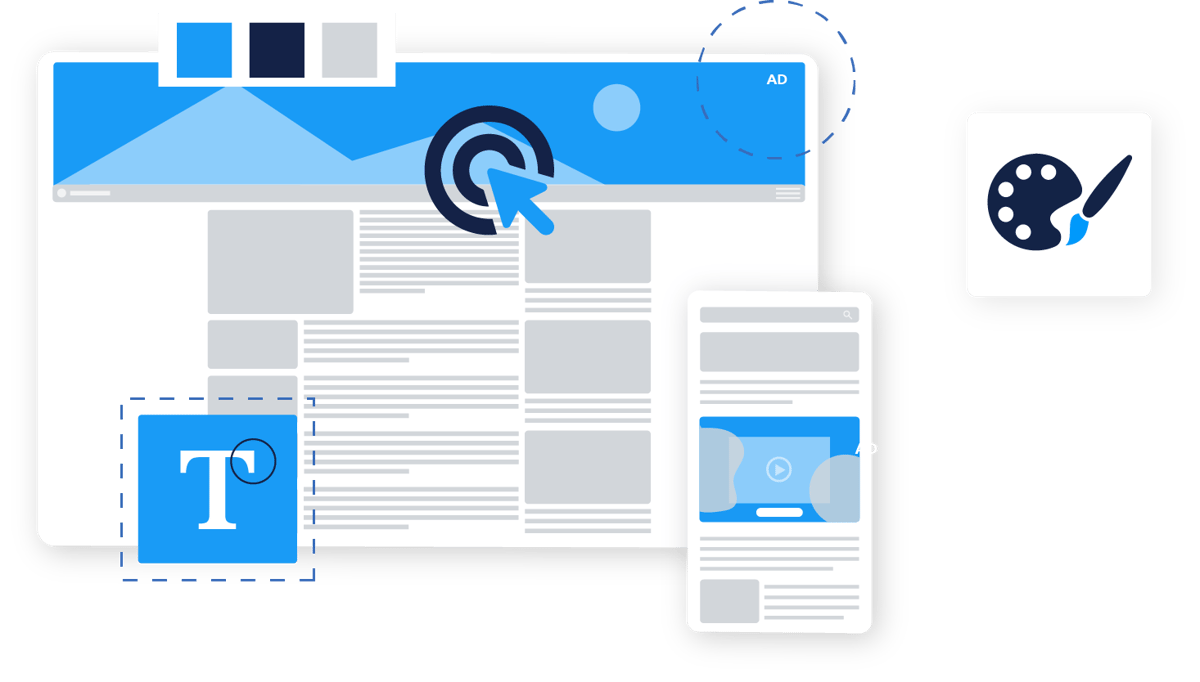
- Ad unit: containers or space on your site or mobile app where ads will be displayed to your site visitors. Each ad unit is assigned a format type which determines which ads will be selected for that space. Your ad units make up your inventory.
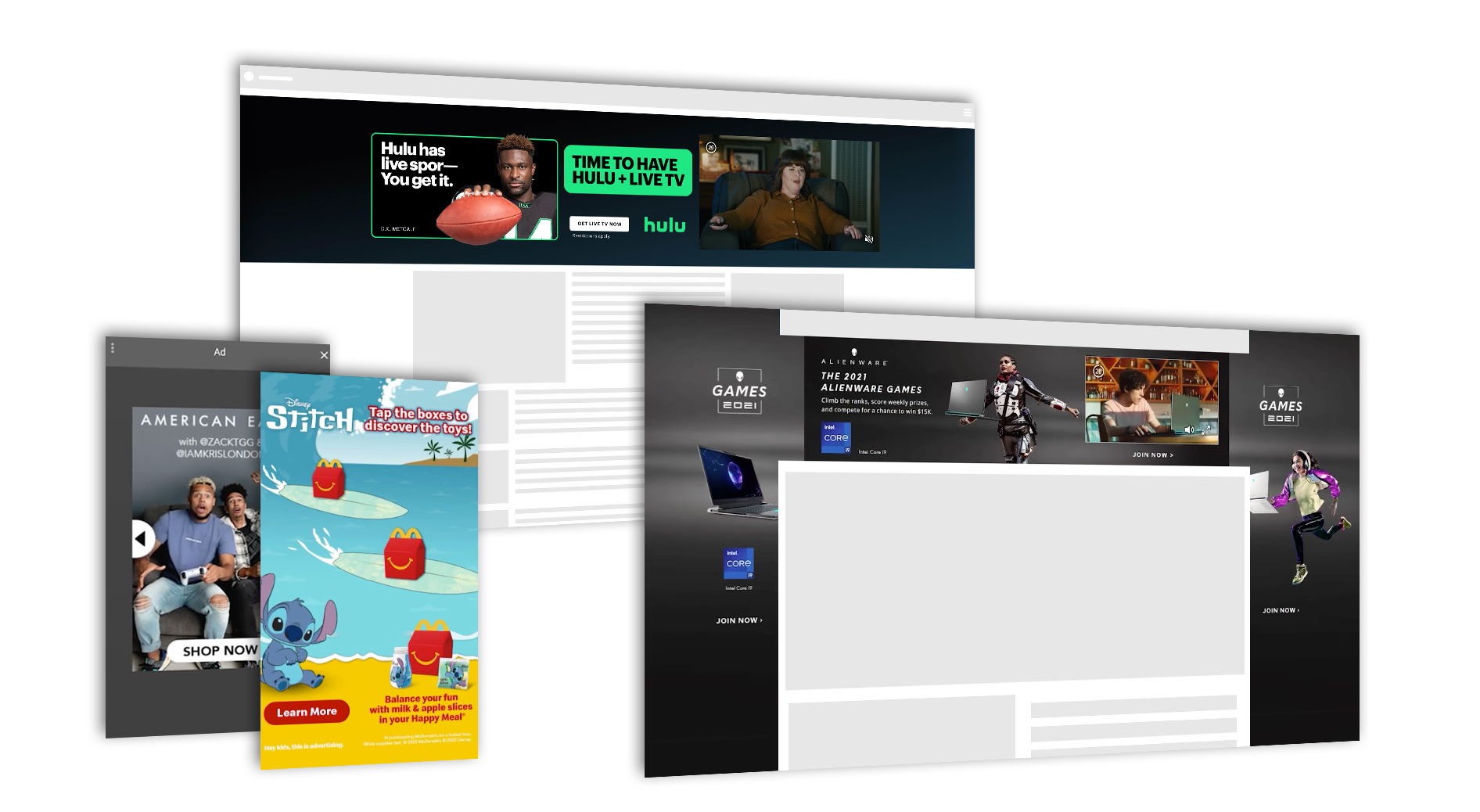
- Ad exchange: a digital advertising hub for ad buying and selling. An ad exchange is a middleman between SSPs, DSPs, and ad networks.
- Header bidding: a method of programmatic advertising that allows sellers to engage in real-time auctions and exchanges with multiple buyers at one time.
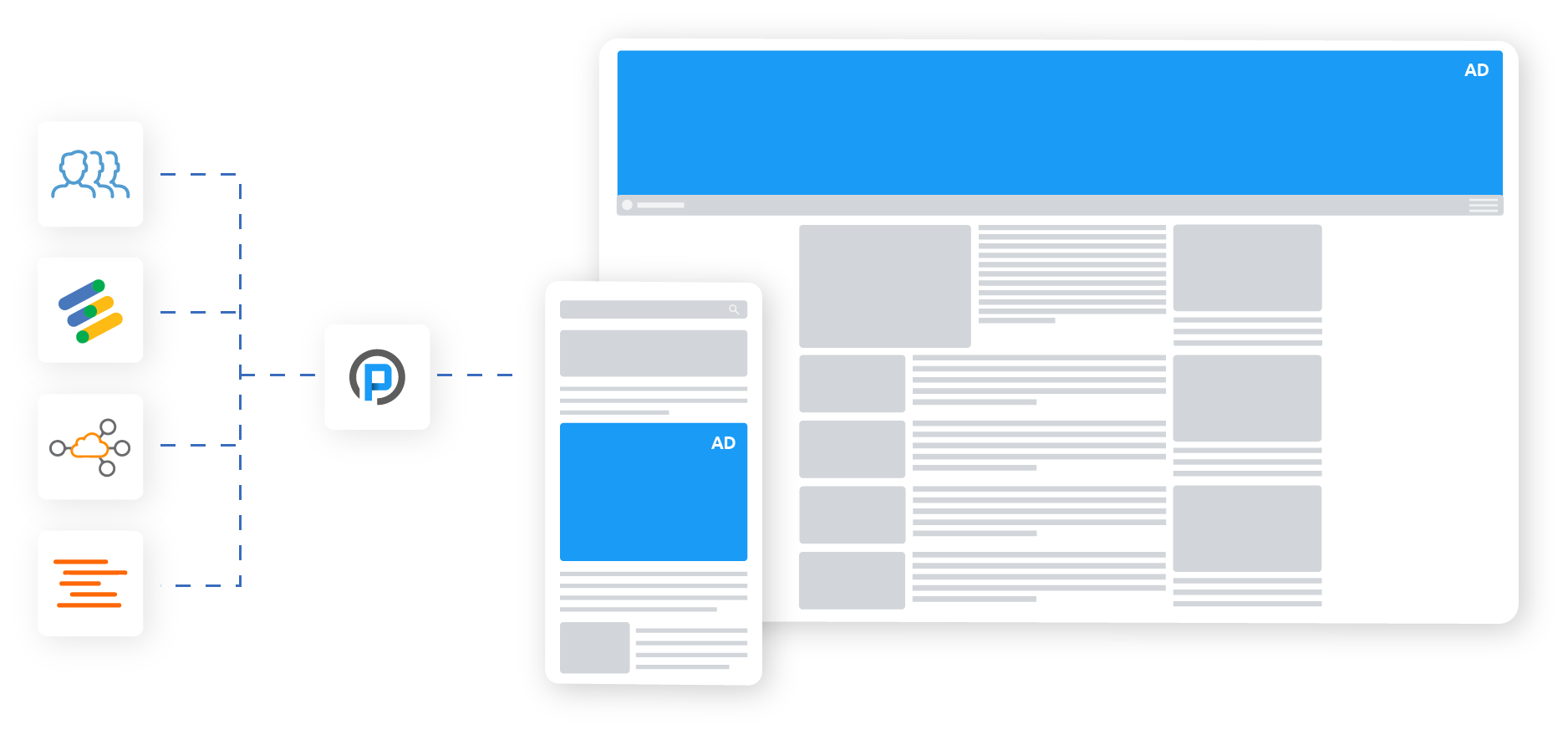
- Real-time bidding: another method of programmatic advertising where buyers purchase ad units on a per-ad impression basis. Once the unit is purchased, it is instantaneously placed on the publisher’s site or app.
- Programmatic advertising: a collection of software and tech that facilitate the automatic trade of ads.
- CPM: a type of ad that is priced by impressions. CPM stands for cost per 1000 impressions. This type of ad minimizes risk for publishers.
- CPC: a type of as that is priced by clicks. CPC stands for cost per click. This type of ad minimizes risk for advertisers.
- CPCV: a type of video ad that is priced by each completed view CPCV stands for cost per completed view.
- CPA: not an accountant — a type of ad that is priced by completed action. CPA stands for cost per action. An action is predetermined in the sale agreement and can be a download, install, or purchase.
- CTR: an important metric for advertisers to gauge the success of their creatives. As a publisher, this is also an attractive metric to demonstrate the success of your content.
Okay, let’s take a break. We have a few to go but first: some Qs to As.
What is an Ad Server?
An ad server is the component of the ad tech ecosystem that distributes ads across your website or mobile app.
The pod. Wind kite. Deliverer. It’s how your ad gets where it’s going.
As a publisher, you’ll most likely use first-party ad servers, which cater to server-side needs such as inventory management, tag generation, and ad placement.
Third-party ad servers are used primarily by advertisers and ad agencies to manage the demand side of the exchange. These ad servers provide campaign management tools and resources such as targeting, optimization, and analytics.
The right ad servers are a vital part of a well-developed ad tech stack.
As for how to select the right ones, we’ve published plenty of resources to help you with that.
What is an SSP?
SSP stands for supply-side platform.
This is software that publishers use to automate the sale of ad units. SSPs function similarly to DSPs (demand-side platforms), with the primary difference being that SSPs primarily serve publishers while DSPs primarily serve advertisers and other demand sources.
SSPs are engineered to help publishers maximize their ad yield. Your SSPs may or may not be successful in achieving this goal.
SSPs connect publishers to a range of demand sources simultaneously. This allows them to drive the value of each ad unit by creating more competition. Ahh, the spar. The backbone of capitalism and all that.
A publisher’s SSP will communicate with an advertiser’s DSP to facilitate the sale of an ad unit. It also coordinates the placement of the ad on the publisher’s site.
Why are SSPs such a big deal in the ad tech industry?
$$$
(Money.)
SSPs are hugely beneficial in increasing ad yield. This is not only because they have the potential to drive the value of a publisher’s inventory, but also because they streamline and simplify the manual negotiation process.
This convenience comes with risks. Programmatic advertising has the potential to decrease the value of ad units if the publisher doesn’t understand how to effectively manage the SSP.
If publishers can establish control over the process, they can set up security measures to improve ad yield. This may include things like minimum prices for ad units and custom packages to make their inventory more attractive to premium advertisers.
It’s important to note that SSPs don’t erase the need for salespeople altogether. This isn’t a robot revolution (sorry). They actually support the work of a sales team by allowing human workers to focus on selling the highest-value ad spaces to the most relevant and attractive advertisers.
-- Article Continues Below --
The Complete Ad Yield Management Resource Center
What is a DSP?
On the other side of the ad exchange are DSPs or demand-side platforms. These serve advertisers by supporting the automated purchase of ad units.
DSPs work similarly to SSPs. The platforms allow advertisers to examine the different ad impressions available on multiple publishers’ sites or apps. Then they decide which units to purchase based on the advertiser’s objectives.
DSPs have automated processes that used to be completed by sales teams. So, maybe a mini-revolution there.
The software can also offer data insights that can drastically improve campaign strategies.
Even the line between SSPs and DSPs is becoming blurred as more DSPs, like The Trade Desk, are offering direct-to-publisher products and features.
What is a DMP?
DMP stands for data management platform.
Its job is what it sounds like: to collect data.
For publishers, this may include data on user demographics and behavior, content engagement rates, and ad engagement.
The data obtained and stored in a DMP can be used to create successful targeting strategies that increase the value of inventory, which in turn, leads to better revenue.
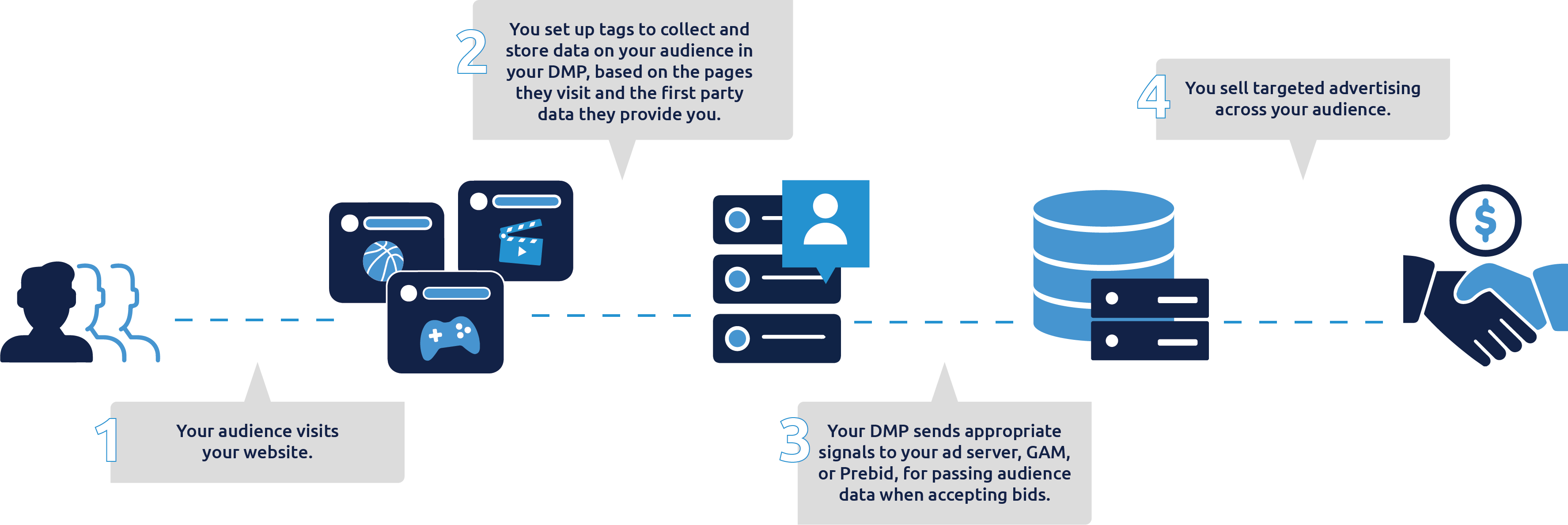
Better data → Better targeting → Higher value inventory → Increased revenue
You may immediately think: but what data?
Yes, RIP third-party cookies. You’ll want your solution to rely on first-party data as heavily as possible.
The data you care about: anything that might be attractive to advertisers about user interests or behaviors.
Other Ad Tech Tools
Wait. There’s more?
Ha.
Yes.
So we covered the primary tools in any basic ad tech stack.
But there’s more.
Each stack will need to be customized to the unique needs of your site or app.
For instance:
- Inventory scanning and ad quality tools: these verify the quality and suitability of an ad creative with regard to the publisher’s typical traffic. Publishers can use ad quality tools to prevent inappropriate or irrelevant ads from appearing on their pages.
- Native ad solutions: any publisher selling native ad space will need to ensure the native ad is cohesive in both content and placement. These tools help with that.
- Brand safety providers: these are less commonly used by publishers, but advertisers use them to ensure their ads aren’t displayed next to inappropriate or prohibited content.
- Publisher management platforms: these platforms offer multifaceted tools and ad monetization management to minimize the workload of the publisher. Playwire, for example, provides a revenue amplification platform that helps publishers simplify their ad tech without sacrificing control or visibility.
- Malvertising software: these solutions prevent security concerns regarding information theft, malware, and other dangerous advertiser behavior.
- App mediation partners: these provide mobile app publishers with simplified, streamlined access to a wide range of ad networks.
- Consent management platforms: CMPs are necessary data security tools that allow site visitors to give permissions regarding the way you use their data. They store this information for future visits and allow you to gather valuable visitor information.
- Viewability measurement providers: ad viewability will have a significant impact on the cost of your ad units, so these tools keep track of your viewability metrics.
- Revenue amplification partners: to simplify the complexity of the ad tech industry, Playwire developed the RAMP Platform to combine all the necessary components of a successful ad tech stack into a streamlined, user-friendly platform. The result is simplicity, control, and maximized ad yield: something which was unthinkable only a few years ago.
Amplify Your Ad Revenue With Playwire
If you made it: take a minute. Let it sink in. That was a crash course in how to survive in the world of ad tech. Everything but how to spot native plants and build a shelter.
We know the ad tech ecosystem is a complex, messy, and confusing space. It’s constantly changing, too. Even if you think you figure it out, one new piece of tech can turn the whole thing upside down.
But there are also incredible adventures to have here. And endless opportunities.
Unless you’re a tier-one publisher with a full in-house team managing your tech stack, it’s nearly impossible to reach a place of true optimization.
Publishers need a solution that allows them to control the minutiae that matters to them while also simplifying what doesn’t. Due to the nature of the industry, that solution needs to be customizable.
The good news is, this solution exists. And we, your fellow sojourners in this fantastic space, designed it for people like you.
Meet the RAMP Platform. RAMP® (Revenue Amplification Management Platform) is a complete turnkey solution that was designed to make ad monetization simple.
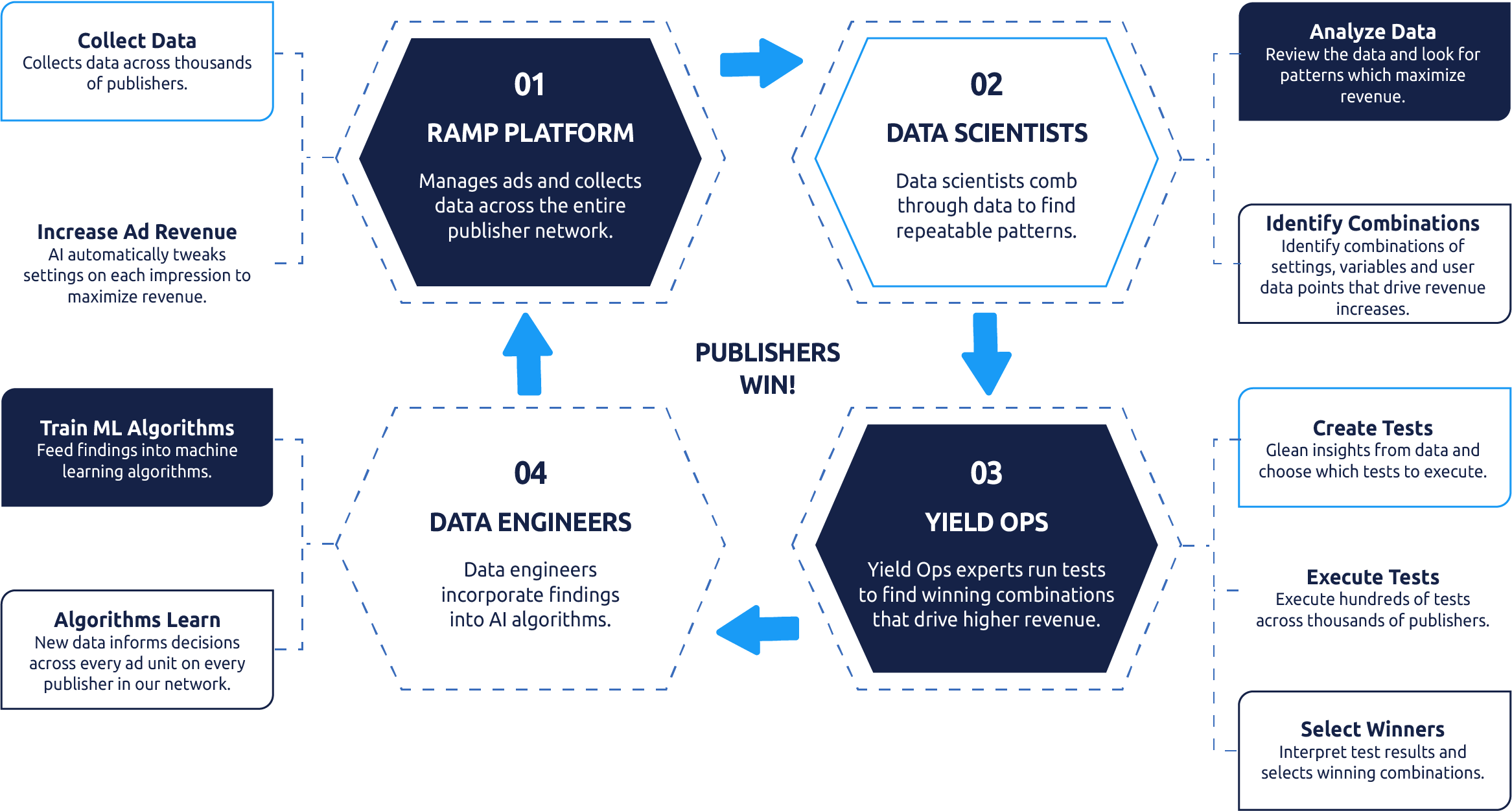
Our software covers every aspect of the ideal ad tech stack and ad operations team, including yield ops, direct sales, and custom creative design.
In other words: all of the dense ideas we just detangled, all of the complexities and challenges, are simplified so you can manage them. Even you. Especially you.
Plus, we have a team of humans behind the scenes dedicated to maximizing your ad revenue.
If you’re a publisher who wants to simplify your tech stack while amplifying your revenue, you’ll love Playwire's RAMP Platform.
Contact us online and let’s do this.

-1.png?width=800&height=157&name=1-playwire-logo-primary-2021%20(1)-1.png)






